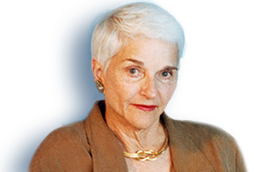National Overview
A few months after her inspiring run for governor of Texas, Sissy Farenthold became a national figure in the women’s movement and made history in the Democratic Party. In July 1972, she became the third woman nominated for the vice presidency of the Democratic Party and the first woman whose candidacy went to a vote at a national convention.
The new wave of feminism spreading across the country in the early 1970s pushed the Democrats and Republicans to increase the number of female party leaders and to debate whether to include issues such as reproductive choice and child care in their party platforms. Farenthold would play a leading role in these efforts during the next stage of her political career, which took her out of Texas and into the national spotlight. Instead of running for office, she spent the next several years helping identify and groom a generation of women for political office and public policy leadership.
In 1973, Farenthold was elected chair of the National Women’s Political Caucus. Founded in 1971 by a coalition of well-known women from diverse racial, political, and economic backgrounds, the Caucus sought to increase the number of women elected to office. From 1973 to 1975, Farenthold worked to build the organization’s infrastructure while stumping across the country for women political candidates and the Equal Rights Amendment, a central part of the Caucus’s platform.
From 1976 to 1980, Farenthold served as the 13th president and first female president of Wells College in Aurora, New York. One of her most notable achievements as president was the establishment in 1978 of the Public Leadership Education Network, or PLEN. At its height, PLEN represented a network of 15 colleges around the country, providing public policy internships and other leadership opportunities for college women.
Both the National Women’s Political Caucus and PLEN continue today, part of Farenthold’s legacy in the women’s movement.
Dig deeper:


